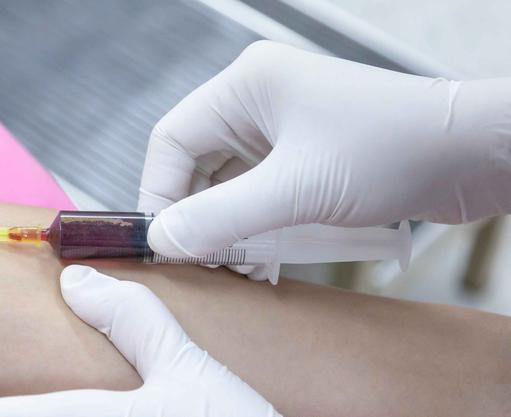|
|
The Mexican Connection
A Special Report
- People are eating themselves to death and our healthcare systems and governments are failing to stop it
- Obesity and type-2 diabetes (diabesity) kills thousands unnecessarily, and threatens the stability of healthcare systems around the world
- In the UK there is mounting frustration with the diabetes establishment’s failure to make inroads into the prevention and management of diabesity
- Mexico is re-engineering the way primary care delivers its services in order to prevent and reduce the burden of diabesity
- There are lessons from Mexico for healthcare systems challenged by the diabesity epidemic
Breaking the cycle of ineffective diabesity services
People are eating themselves to death, and our healthcare systems are failing to stop it. Not more so than in Mexico, where 70% of the population is overweight and 33% obese; both risk factors of type-2 diabetes (T2DM), which kills 70,000 Mexicans each year.
The situation is not that different in the UK, which has the highest levels of obesity in Western Europe: 64% of adults in the UK are either overweight or obese, and the incidence rates of diabetes have more than trebled over the past 30 years. Each year, in the UK diabetes kills 22,000 people unnecessarily, and leads to 7,000 avoidable lower limb amputations.
The two countries differ however in their respective responses to the epidemic of obesity and diabetes (diabesity), which is the subject of this Commentary. While the UK’s diabetes establishment appears to be locked into a cycle of ineffectiveness, the Fundación Carlos Slim (FCS), is re-engineering the way Mexico’s primary healthcare system delivers its services in order to prevent and reduce the vast and escalating burden of diabesity. The FCS’s endeavours have important lessons for the UK, and indeed other countries battling with a similar epidemic.
|
|
|
Diabesity a global challenge
Diabesity is no longer a disease of rich countries; it is increasing everywhere. An estimated 422m adults were living with diabetes in 2014, compared to 108m in 1980. The global prevalence (age-standardized) of diabetes has nearly doubled since 1980, rising from 4.7% to 8.5% in the adult population. This reflects an increase in associated risk factors such as being overweight or obese. Uncontrolled diabesity has devastating consequences for health and wellbeing, and it also impacts harshly on the finances of individuals and their families, and the economies of nations.
|
|
|
Mounting frustration with the UK’s diabetes establishment
Although there is consensus about what needs to be done to prevent and enhance the management of obesity and T2DM, and although each year NHS England spends £10.3bn on diabetes care, and £4bn to treat obesity, the prevalence rates of the conditions continue to rise, and the UK’s diabetes establishment seem unable to do anything about it.
This ineffectiveness has caused mounting frustration with the diabetes establishment on the part of the UK government’s National Audit Office (NAO) and the Public Accounts Committee (PAC). Numerous official inquiries into adult diabetes services have found no evidence to suggest that T2DM prevention and care are effectively managed, and failure to do so leads to higher costs to the NHS as well as less than adequate support for at risk people and those with the condition.
Damning official inquires into adult diabetes services
A 2015 NAO report into adult diabetes services found, “that performance in delivering key care processes and achieving treatment standards [recommended by the National Institute for Health and Care Excellence (NICE)], which help to minimise the risk of diabetes patients developing complications in the future, is no longer improving . . . . There are significant variations across England in delivering key care processes, achieving treatment standards and improving outcomes for diabetes patients, (and) . . . There are still 22,000 people estimated to be dying each year from diabetes-related causes that could potentially be avoided”.
|
|
|
The 9 basic processes for diabetes care
The nine NICE recommended basic processes of diabetes care are: (i) blood glucose level measurement (HbA1c), (ii) blood pressure measurement, (iii) cholesterol level measurement, (iv) retinal screening, (v) foot and leg checks, (vi) kidney function testing (urine), (vii) kidney function testing (blood), (viii) weight check, and (ix) smoking status check. |
|
|
|
No strong national leadership and depressingly poor progress
When the Public Accounts Committee (PAC) reported on adult diabetes services in 2012 it found that, "progress in delivering the (NICE) recommended standards of care and in achieving treatment targets has been depressingly poor. There is no strong national leadership, no effective accountability arrangements for commissioners (local healthcare providers), and no appropriate performance incentives for providers." Four years later, a 2016 PAC inquiry into adult diabetes services reported that nothing of significance had changed. The Committee was concerned, “that performance in delivering key care processes and achieving treatment standards is no longer improving”, and it challenged, “the Department of Health, the NHS and Public Health England on their lack of progress in improving patient care and support”.
The UK’s cycle of ineffective diabesity services
The NAO and the PAC inquiries appear to have identified a cycle of ineffectiveness among the UK’s diabetes establishment, which manifests itself in a familiar scenario. Here is a stereotypical picture.
Each year, after the publication of the latest prevalence data for obesity and diabetes, Diabetes UK, a leading charity, “calls on the government to do more”, the National Clinical Director for Obesity and Diabetes at NHS England makes a defensive statement usually emphasising the positive aspects of diabetes services. NHS England continues to spend £14.3bn each year on the treatment of diabesity. There continues to be little improvement in the 20,000 plus unnecessary annual diabetes-related deaths, and 7,000 avoidable amputations. Diabesity services continue to be inflexible and process, rather than outcomes driven. Nothing of substance changes, prevalence rates and eye-watering costs continue to rise, and no one is accountable.
This cycle of ineffectiveness reflects a dearth of national leadership among the diabetes establishment.
The Fundación Carlos Slim (FCS) appears successfully to have broken a similar cycle of ineffectiveness for the prevention and treatment of diabesity in Mexico. The Fundación used the weaknesses in Mexico’s primary healthcare system as an opportunity to re-engineer the prevention and treatment of diabesity with an innovative program called Casalud. The name is derived from two Spanish words: “casa” (house) and “salud” (health): ‘Homehealth’.
In 2008, when the FCS launched the Casalud program, the primary care services of both the UK and Mexico were similar in in their inflexibility, and in emphasising treatment processes and service delivery rather than value-based healthcare. This emphasis results in weak primary care systems, which contribute to the increased prevalence of diabesity.
We will draw lessons from the Casalud program, but before doing so let us consider the grounds for a comparison between the healthcare systems of the UK and Mexico.
UK and Mexico compared
In both countries the prevalence of obesity and T2DM are high and increasing. Both governments’ healthcare systems are struggling to effectively cope with the vast and growing burden of diabesity. Mexico’s Seguro Popular, which is roughly equivalent to NHS England, serves about 57m people: which includes 60% - 34m - of Mexico’s poorest non-salaried workers employed in the informal sector. Mexico’s population is younger than the UK’s. The median age of Mexico’s 129m citizens is 29 years, whereas in the UK, which has a population of 65m, the median age is 40 years.
Both the UK and Mexico struggle with structural challenges associated with the supply and competence levels of health professionals. These manifest themselves in significant local variations in the effectiveness of diabesity prevention and treatment, and in lengthy waiting times for GP consultations.
Annual foot checks in the UK and Mexico
In England for instance, standard annual recommended foot checks for people with diabetes vary as much as 4Xs depending on where you live. Each year 415,000 or 13.3% of people with T2DM do not receive foot checks, which increases their risk of amputation, and fuels the 7,000 avoidable lower limb amputations carried out each year. Similarly in Mexico, 60% of people with diabetes fail to have their feet examined during primary care consultations, and between 86,000 and 134,000 diabetes-related amputations occur each year.
Responding to the recent English findings, Professor Jonathan Valabhji, the National Clinical Director for Obesity and Diabetes at NHS England said; “It is very important as many people as possible receive their foot checks at the right time – currently each year 85% of people with diabetes receive these foot checks.”
Leadership to break the cycle of ineffective healthcare services In contrast to the UK’s diabetes establishment, the Casalud program provides strong, well-coordinated national leadership, and effective accountability and performance incentives for local healthcare providers. It does not however, deliver direct healthcare services; these are provided by the state. Instead Casalud concentrates on fostering the implementation and use of innovative technology, which it has designed to enhance patient centred primary care, extend healthcare into communities and homes, encourage self-management, engage in prevention programs, and enhance the competence and capacity of healthcare professionals within Seguro Popular.
For the Casalud program to stand a chance of being supported by the Mexican government, and implemented nationally, the FCS understood that it was essential to collect convincing performance data in its pilot program. From its inception therefore, the Casalud program developed and agreed with the relevant healthcare agencies a suite of performance measures, data collection protocols and reporting systems. This helped the Fundación to secure the backing of key national and regional healthcare agencies.
The FCS chose a social franchising model for the Casalud program, which uses commercial best practice to achieve socially beneficial ends, rather than profit. This makes the program significantly different to the endeavours of some UK public and non-profit bureaucracies, which provide diabesity services.
|
|
|
Some common aspects of bureaucracies
Here we briefly describe some common aspects of bureaucracies, which suggest that over time, bureaucratic organizations may become ineffective diabesity service providers. Bureaucracies are machine-like organizations characterised by hierarchical authority, a detailed division of labour, and a set of rules and standard procedures, which staff are obliged to follow. Rules provide a means for achieving organisational goals, but the following of the rules sometimes displaces the actual objective of the organisation, and organisational objectives become secondary. This is encouraged by the fact that people in bureaucracies tend to be judged on the basis of observance of rules and not results. For example, in an organisation, say committed to diabetes services, performance may be judged on the basis of whether expenditure has been incurred according to rules and regulations. Thus, expenditure becomes the criterion of performance measurement, and not the results achieved through expenditure. Bureaucracies almost completely avoid public discussion of its techniques, although there may be some discussion of its policies. This secrecy is believed to be necessary to prevent “valuable information” from leaking out, and going to competitors. “Trained incapacity” is a term sometimes applied to bureaucracies to describe training and skills, which have been successful in the past, but are unsuccessful under present changed conditions. Inadequate flexibility, in an evolving environment such as healthcare, will result in ineffectiveness.
|
|
|
|
mHealth platform embedded with bespoke tools
The Casalud program avoided bureaucratic traps that result in ineffectiveness by developing a flexible mHeath platform (the use of mobile phones and other wireless technology in medical care) with an embedded suite of proprietary software, which connects patients to health providers, nudges people to self-manage their own health, and to become integral members of local care teams. The platform is used for mobile screening, providing patients with their own individual healthcare dashboards, online healthcare education, supply chain monitoring, standardizing electronic patient records, and big data strategies. It also acts as an entry point for patients, support for health professionals to identify at-risk people, make early diagnosis, and quickly begin diabesity management, and structure follow-up with patients over time.
The Casalud program’s successful pilot
In 2009, the FCS began a 3-year pilot of its Casalud program in 7 Mexican states, which resulted in improved patient knowledge about diabesity, enhanced self-management among people with the condition, increased clinician knowledge of diabesity prevention and management, and improved clinical decision-making.
The FCS used performance data from its pilot to secure a partnership with the Mexican Ministry of Health to extend the Casalud program to 120 primary care clinics serving 1.3m people across 20 Mexican states - 4 to 10 clinics in each state. Also, the performance data was successful in getting the Casalud program adopted as an integral component of the National Strategy for the Prevention and Control of Pre-obesity, Obesity and Diabetes. So, within three years the Casalud program went from a relatively small charity-backed start-up to a significant component in a nationally supported healthcare system.
It is reasonable to assume that this was partly due to the leadership provided by the FCS, and partly due to setting, collecting and reporting appropriate performance indicators. The FCS acted similarly to a lead institution in a commercial endeavour, and successfully recruited key contributing partners who were prepared to share the costs of the program’s national rollout. The FCS covers the cost of all the software development, and the training of healthcare professionals for the Casalud program. All the software is owned by the FCS, and licensed free-of-charge to the Mexican government. The federal government covers the cost of all computer hardware used in participating clinics, and local state governments cover the cost of Casalud’s operations, which include such things as laboratory tests and medications.
The 5 components of the Casalud program
1. Proactive prevention and detection of diabesity
Previous attempts in Mexico at community based screening for diabesity have failed. However, the FCS insisted that a national screening strategy was important for reducing the burden of diabesity, but understood its case would need to be supported by appropriate performance data, which would require systematic collection and reporting. To help achieve this the FCS developed two online risk assessment tools, which capture, assess and report data on peoples’ risk factors of diabesity.
One of these tools is used in clinics, and the other, which is portable, used in homes and communities. Both screen and categorise people as, (i) healthy, (ii) at risk of diabesity, and (iii) already diagnosed as obese or with T2DM. Screening allows local healthcare professionals to suggest personalised lifestyle changes to individuals either to help them reduce their risk of diabesity or to improve their management of the condition. Each participating clinic has a screening goal. Screening data are collated and reported weekly on a pubic system, which incentivizes the clinics in their screening endeavours.
Having a portable device means that populations, which previously did not have access to healthcare are included in the screening. While this increased the number of reported people with diabesity, over time it lowered healthcare costs because early detection reduced the use of urgent care facilities. This proactive component of the Casalud program and the performance data resulted in the support of federal healthcare officials who saw the advantages of using technology to integrate communities, families, and patients into a continuum of care. The tools also extended care to people and communities that previously had little access to healthcare, and encouraged patients to use technology to manage their own health, which health authorities appreciated.
2. Evidence-based diabesity management
The second component of the Casalud program is an evidence-based diabesity management system, which is supported by more software developed by the FCS. This includes agreed international best practice protocols for diabesity prevention and management, a digital portfolio for health professionals, electronic monitoring of patients in order to improve the accuracy and reliability of performance measurements and patient data. Such data are used to improve the quality of clinical decision-making.
Examples of the data collected and reported are the percentages of people with T2DM and their corresponding laboratory test results. Casalud’s study found that out of 961,733 patients with T2DM, only 20% had an HbA1c (blood glucose) measurement. Further, only 40.7% of patients with an HbA1c measurement had their HbA1c levels under control (below 7%). All data are made available at the national, state and clinic levels, and are thereby expected to empower healthcare providers to base their health policy decisions on the areas of most need.
3. Supply chain improvement
Mexico like other emerging countries suffers from an inconsistent supply of medicines and laboratory tests, which is a significant obstacle to optimal disease prevention and management. Drug supply decisions in Mexico are centralized and made at a state or federal level. This is different to the UK, and other developed countries.
This component of the Casalud program uses a proprietary online information system that standardizes metrics for stock management at the clinic level to improve the supply of medicines and laboratory tests. The software is made available on mobile phones to make it easy for health professionals to ensure that stock levels are adequate for clinics to provide a quality service. In addition, Casalud uses these data to raise awareness with federal and state healthcare officials of inefficiencies in supply chains, which could fuel complications and increase healthcare costs. Prior to Casalud there was no accurate and systematic way to assess and report on the supply of medicines and laboratory tests.
4. Capacity building for healthcare professionals
Casalud’s forth component is an interactive platform to develop the capacity of healthcare professionals through online education, which leads to diplomas conferred by national and foreign universities. The FCS partnered with Harvard University’s Joslin Diabetes Center, and Mexico’s National Institute of Medical Sciences and Nutrition to develop courses that certify competence in key areas of diabesity prevention, diagnosis and management. One course is designed to update doctors’ knowledge of diabesity, and the other is a practical course developed by faculty of the Joslin Diabetes Center in which health professionals solve real-life cases to test their knowledge in practical settings.
Certificates act as non-monetary incentives for health professionals, and to promote competition between clinics and health professionals. This helps to increase participation in the program, improve the quality of care, encourage openness and transparency, and increase collaboration between clinics.
Software developed by the FCS assists local clinics to capture data on the characteristics of the participating healthcare professionals, their baseline knowledge, and improvements after each course. These data are aggregated to choose a clinic of excellence for each state, and a national clinic of excellence; both of which are publicly recognised awards, and help with Casalud’s national rollout strategy.
Further, performance data are contributed to the National Strategy for Improving Skills and Capacity of Healthcare Personnel, which obliges all Mexican healthcare institutions to engage in formal online training that is, personalized, linked to a continuing education program, validated by academic institutions and independently monitored. Casalud’s capacity building component fulfils all of these criteria.
5. Patient engagement and empowerment
With the help of the Joslin Diabetes Center, the Mayo Clinic, and Mexico’s National Nutrition Institute, this component has two mobile applications, which assess patient engagement, knowledge of diabesity, and confidence and skills in order to help them understand their health, begin to self-monitor their condition, interpret their own results, and implement beneficial lifestyle changes. A specific app for people with T2DM allows them to schedule medicines and appointment reminders, input glucose and weight measurements, and receive immediate personalized feedback and educational messages from health professionals.
However, the FCS changed its approach following evidence from the program’s pilot, which suggested that due to the characteristics of the patient population – elderly, rural, and with limited access to and familiarity with technology – mobile technology alone would not lead to a high percentage of patient engagement. So, Casalud implemented a suite of in-person interactions and activities, which are thought to be more appropriate for the specific patient population.
Such a change may not be necessary in the UK and other developed countries. In the UK for instance, the growth trend in smartphone ownership is present in all age groups, and fastest among 55-64 year olds, which jumped from 39% in 2014 to 50% in 2015. While those aged over 55 are more likely to own a laptop the gap is closing. Among younger age groups, 90% of those aged 16-24 now owns a smartphone.
Takeaways
Although the Casalud program has encountered challenges associated with Mexico’s patchy technological infrastructure, entrenched attitudes of some health professionals, and fragmentation and lack of uniformity of its primary healthcare system; the program has been successful; not least because of its flexibility and speed of adjusting to prevailing conditions. In 2015 a Brookings Institution research paper concluded that, “Casalud has made significant strides in transforming care delivery in Mexico”.
Casalud’s development and implementation continues. It is an innovative program, which employs appropriate technology and evidence-based knowledge to re-engineer Mexico’s public sector primary healthcare system by encouraging patient self-management to reduce the country’s vast and increasing diabesity burden.
Casalud provided leadership and seed money to secure financial support from and create consensus between the federal and state governments, and obtain local support from clinics, healthcare professionals and patients. The program is on-going and warrants consideration from the UK’s diabetes establishment, and those of other countries wrestling with the burden of diabesity.
|
|
|
|
|
| |
|






























